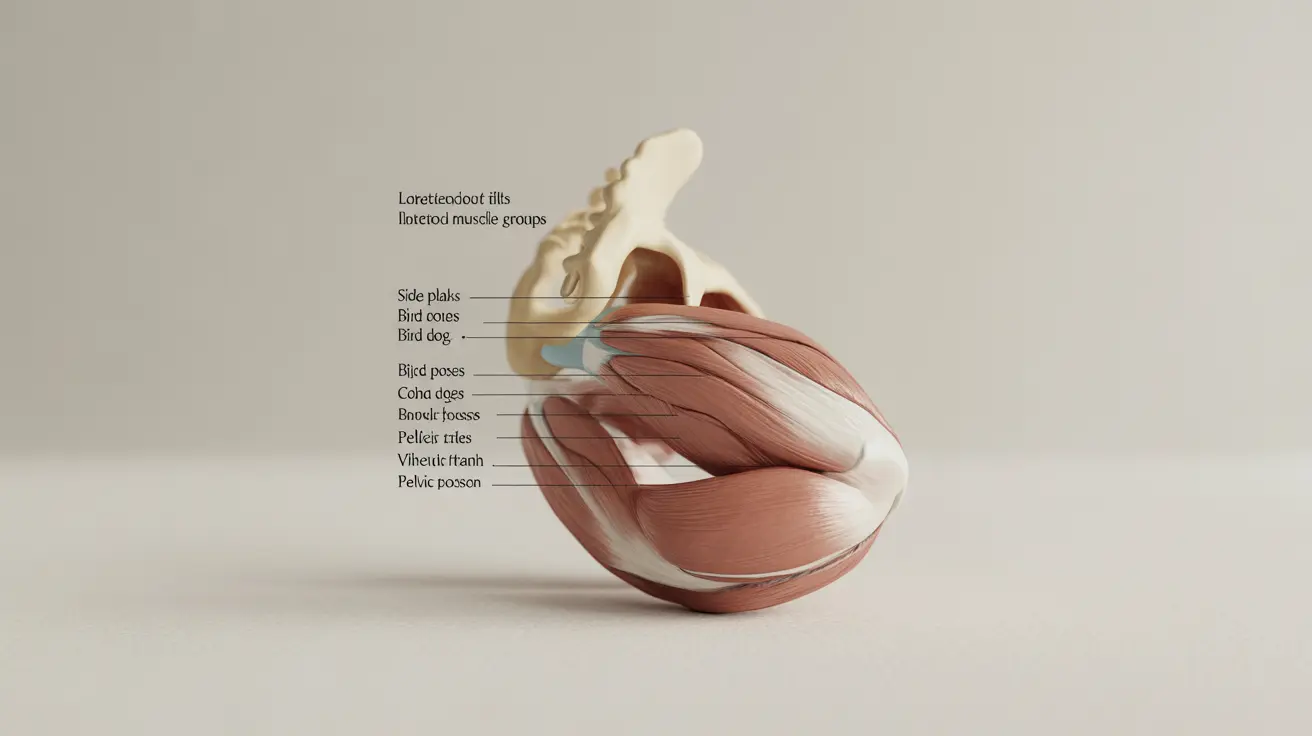A lateral pelvic tilt occurs when one side of your pelvis sits higher than the other, creating an imbalance that can affect your entire body's alignment. This common postural issue can lead to various complications, from lower back pain to hip discomfort, but with proper understanding and targeted exercises, it can be effectively managed and corrected.
Understanding how to identify, treat, and prevent lateral pelvic tilt is crucial for maintaining proper body mechanics and preventing long-term musculoskeletal problems. This comprehensive guide will explore the causes, symptoms, and most effective exercises for addressing this condition.
Understanding Lateral Pelvic Tilt
Lateral pelvic tilt is a postural condition where the pelvis becomes uneven in the frontal plane, with one hip sitting higher than the other. This misalignment can affect your spine, hips, and overall body mechanics, potentially leading to chronic pain and movement limitations if left untreated.
Common Causes and Risk Factors
Several factors can contribute to the development of a lateral pelvic tilt:
- Muscle imbalances between sides of the body
- Leg length discrepancies
- Poor posture habits
- Repetitive movements or sustained positions
- Scoliosis or spinal irregularities
- Previous injuries or surgeries
Signs and Symptoms
Recognizing the signs of lateral pelvic tilt is the first step toward correction. Common symptoms include:
- Uneven hip heights when standing
- Asymmetrical shoulder positioning
- Lower back pain, particularly on one side
- Hip discomfort or tightness
- Uneven wear patterns on shoes
- Changes in walking pattern or gait
Corrective Exercises and Treatment Approaches
A comprehensive treatment plan typically involves targeted exercises to address muscle imbalances and improve pelvic alignment. Here are some effective exercises commonly recommended by physical therapists:
Core Strengthening Exercises
- Side planks
- Bird dog poses
- Dead bug exercises
- Pelvic tilts
Hip and Gluteal Exercises
- Clamshells
- Hip bridges
- Side-lying leg raises
- Wall squats
Recovery Timeline and Expectations
The time required to correct a lateral pelvic tilt varies depending on several factors, including the severity of the tilt, consistency with exercises, and underlying causes. Most people begin to notice improvements within 4-8 weeks of regular exercise, though complete correction may take several months.
Prevention and Maintenance
Maintaining proper pelvic alignment requires ongoing attention to posture and regular exercise. Key preventive measures include:
- Regular stretching and strengthening exercises
- Proper ergonomics at work and home
- Balanced physical activity
- Regular movement throughout the day
- Appropriate footwear
Frequently Asked Questions
What are the common causes and symptoms of lateral pelvic tilt? Lateral pelvic tilt is commonly caused by muscle imbalances, leg length differences, poor posture, and repetitive movements. Common symptoms include uneven hips, lower back pain, asymmetrical shoulders, and changes in walking patterns.
How can exercises help correct lateral pelvic tilt and improve pelvic alignment? Exercises help by strengthening weak muscles and stretching tight ones, restoring balance to the pelvis. They target core muscles, hip flexors, and gluteal muscles to improve overall pelvic stability and alignment.
What specific exercises are most effective for strengthening the muscles involved in lateral pelvic tilt? The most effective exercises include side planks, hip bridges, clamshells, and bird dog poses. These exercises target key muscle groups that support proper pelvic alignment and stability.
How long does it typically take to see improvement from lateral pelvic tilt exercises? Most people begin to notice improvements within 4-8 weeks of consistent exercise. However, complete correction may take 3-6 months, depending on the severity and underlying causes.
What precautions should I take when doing exercises to fix lateral pelvic tilt to avoid injury? Start exercises slowly and focus on proper form. Stop if you experience pain, avoid overexertion, and consider working with a physical therapist initially. Progress gradually and listen to your body's signals.




